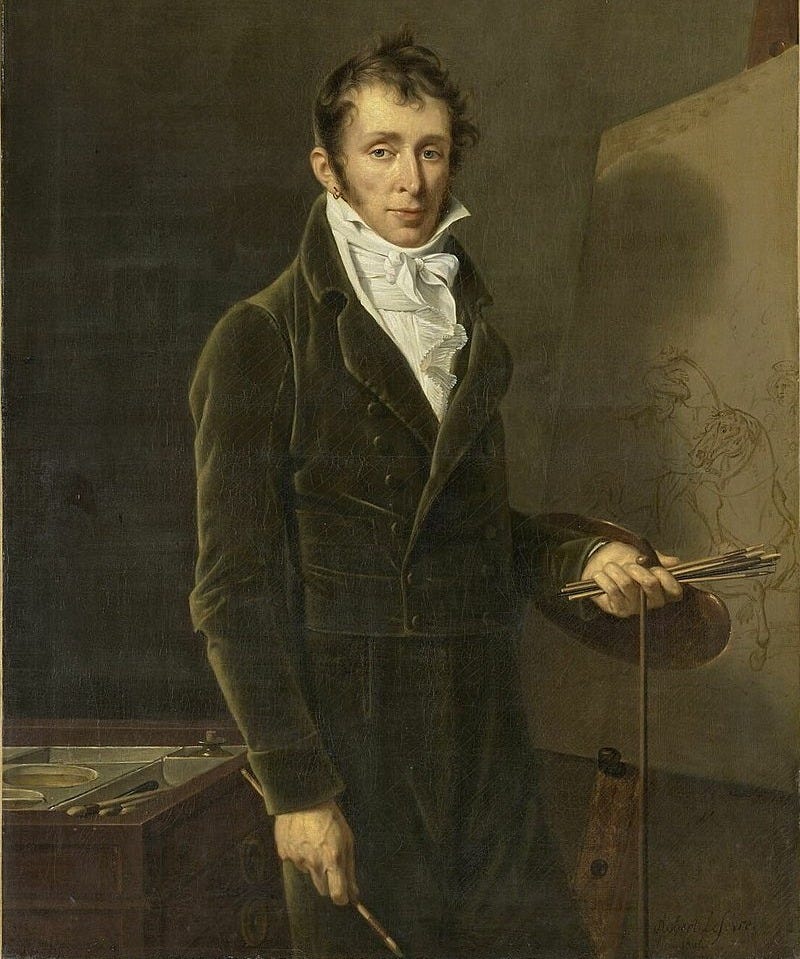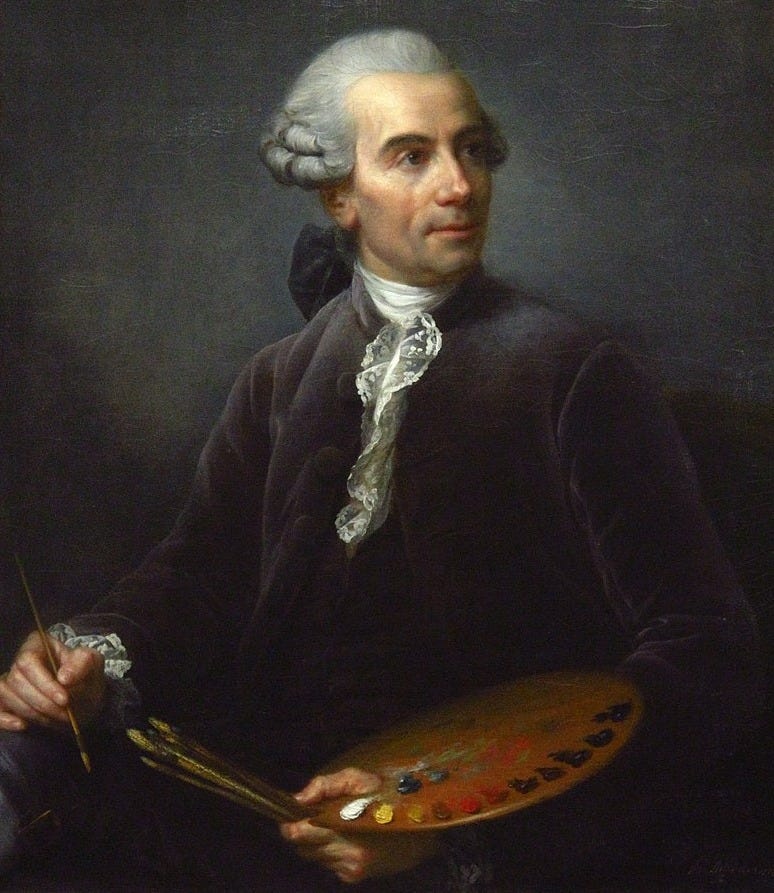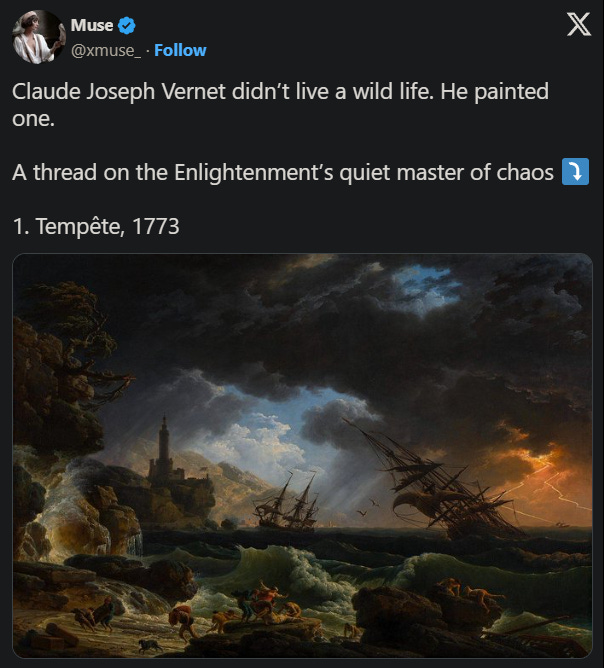Claude Vernet: Storm, Control, Legacy
How a Teenage Runaway Painted the Power of Nature Without Losing His Balance
In an age when artistic genius often wore the mask of madness or excess, Claude Joseph Vernet carved a different path. His life was not marked by scandal or flamboyance, but by discipline, diplomacy, and vision—a quiet mastery that would secure his place as one of the most celebrated painters of 18th-century France.
Never miss a post! Subscribe for free.
Born in 1714 in Avignon, Vernet was no provincial dreamer. At just 14, he left home for Rome, determined to train under the best. There, he immersed himself in the dramatic naturalism of Salvator Rosa, the atmospheric elegance of Claude Lorrain, and the theatricality of Roman seascapes.
But Vernet wasn’t a mimic.
He absorbed, refined, and reimagined, developing a style that fused the sublime spectacle of nature with a subtle orchestration that felt almost cinematic.
His talent earned the admiration of patrons across Europe, but it was Louis XV’s commission in 1753 that changed everything. Vernet was tasked with capturing the major seaports of France, not as sterile topography, but as living, breathing portraits of labor, weather, and empire. For over a decade, he embedded himself in coastal cities, painting not only ships and harbors but storms, rituals, and communities. These works served as state propaganda, glorifying France’s naval strength while elevating the quotidian to the mythic.
Unlike many of his contemporaries, Vernet lived without notoriety. No duels, no debts, no vanished mistresses or scandalous patrons.
His storms were on canvas, not in life. Yet he wasn’t detached from the currents of his age.
He moved in Masonic and Enlightenment circles, surrounded by philosophers, scientists, and fellow artists. His paintings, rich in allegory, echoed the era’s fascination with nature, reason, and man’s shifting place between the two.
Cultural Canvas is a reader-supported publication. Every like, comment, share, and donation helps us grow—your support truly matters!
Vernet’s legacy didn’t end with him. His son, Carle Vernet, and grandson, Horace Vernet, both became prominent painters, turning his quiet dynasty into a visual lineage that spanned revolutions and regimes.

In Claude Joseph Vernet, we find a paradox: a painter of tempests who lived without turbulence.
A man who tamed nature’s chaos without letting it rule his own.
His life may not thrill tabloids, but in its stead is something rarer—a portrait of power, restraint, and enduring vision.
Missed our last story? Read it here!
Thank you for being part of Cultural Canvas! If you love what we do, consider supporting us to keep it free for everyone. Stay inspired and see you in the next post!





